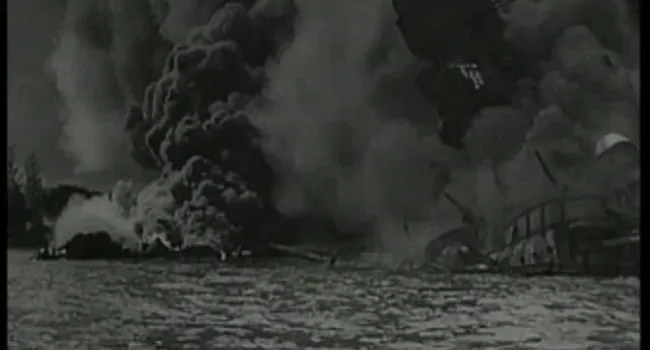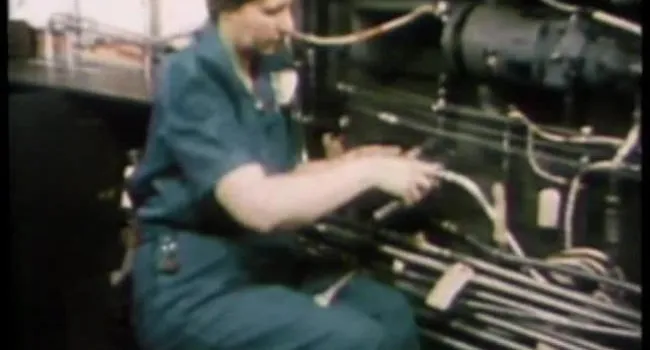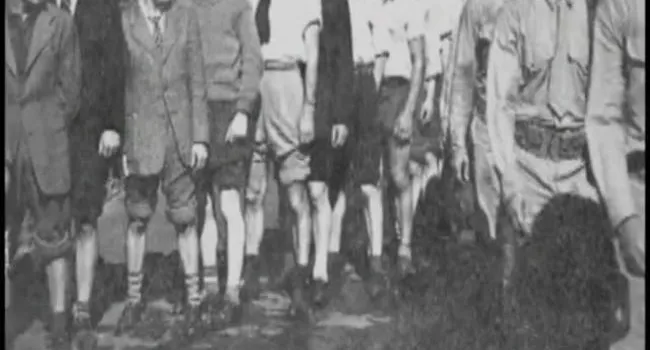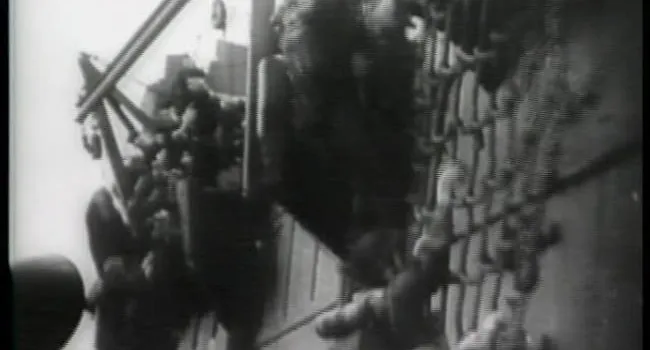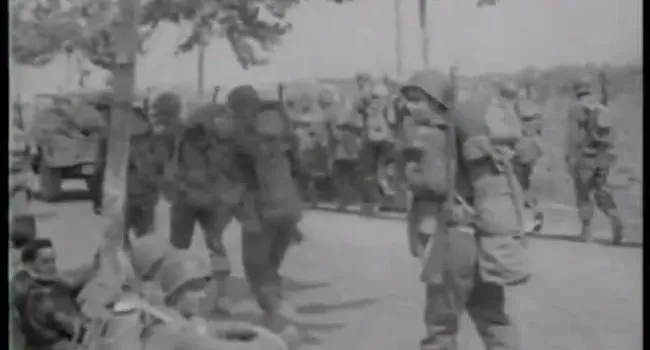This segment documents the era of the Great Depression. It was a decade of misery that started with the Stock Market Crash of 1929. Across the nation in the 1930s, 15 million were unemployed. Thirty percent of South Carolina's workforce had no jobs. Free food lines were the norm. In Columbia in 1932, more than a half-million free meals were served to the destitute. Nearly everyone in the state was affected. South Carolinians share their reflections of this time. No government aid existed. South Carolina had no old-age pensions, and there was no assistance for the blind or dependent children, Between 1920 and 1935, 80 percent of the state's high school graduates left the state to seek a better life. Unemployment was high and personal health was poor. These conditions produced a generation of survivors.
When Franklin D. Roosevelt was President, numerous programs were created to put people to work. State Parks were built, along with an airport in Greenville, the Dock Street Theater and the Navy Yard in Charleston, and there was help for the farmers. Santee-Cooper was built with PWA funds and labor paid by the WPA, and delivered electric power to the Lowcountry.
Standards
- 5.2.CO Compare the cultural and economic impacts of the 1929 Stock Market Crash on the U.S. and South Carolina.
- This indicator was designed to promote inquiry into the devastation of the Great Depression and the impact of the New Deal on a largely agricultural South Carolina. This indicator was also designed to foster inquiry into the economic diversification between World War II and the present, to include tourism, global trade and industry, and the maintenance of military bases.
- USHC.4.CE Evaluate significant turning points, including the immediate and long-term causes and effects of the business cycles of capitalism.
- 5.2.P Summarize how the role of the federal government expanded during the period.
Este segmento documenta la era de la Gran Depresión. Fue una década de miseria que comenzó con el desplome de la bolsa de valores de 1929. En toda la nación en la década de 1930, 15 millones estaban desempleados. El treinta por ciento de la fuerza laboral de Carolina del Sur no tenía trabajo. Las filas de comida gratis eran la norma. En Columbia, en 1932, se sirvieron más de medio millón de comidas gratuitas a los indigentes. Casi todos en el estado se vieron afectados. Los habitantes de Carolina del Sur comparten sus reflexiones sobre esta época. No existía ninguna ayuda gubernamental. Carolina del Sur no tenía pensiones de ancianos y no había asistencia para los niños ciegos o dependientes. Entre 1920 y 1935, el 80 por ciento de los graduados de la escuela secundaria del estado abandonaron el estado para buscar una vida mejor. El desempleo era alto y la salud personal era mala. Estas condiciones produjeron una generación de sobrevivientes.
Cuando Franklin D. Roosevelt fue presidente, se crearon numerosos programas para poner a la gente a trabajar. Se construyeron parques estatales, junto con un aeropuerto en Greenville, el teatro Dock Street y el Navy Yard en Charleston, y hubo ayuda para los agricultores. Santee-Cooper se construyó con fondos de Administración de Obras Públicas (PWA) y mano de obra pagada por PWA, se entregó energía eléctrica a Lowcountry.
